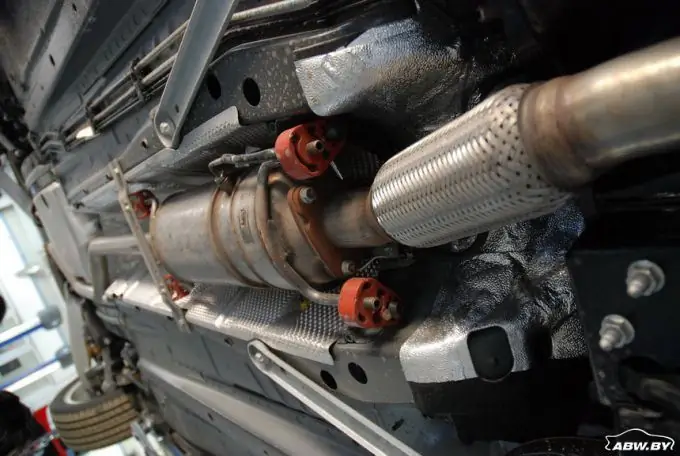- Author Maria Gibbs [email protected].
- Public 2023-12-16 03:05.
- Last modified 2025-01-22 17:47.
Diesel Particulate Filters (DPF) are used in modern diesel vehicles. In Europe, diesel engines are considered one of the most popular and widely used in the automotive industry.

The diesel engine emits exhaust gases into the atmosphere during operation. The fuel in the engine does not burn completely and is released into the atmosphere. Exhaust gases contain toxic and carcinogenic substances. Black smoke and rattling sound were the hallmarks of a diesel car.
Since 2009, diesel particulate filters have become mandatory for serial installation on diesel vehicles to comply with Euro 5 and higher standards.
The DPF filter by 80-90% traps harmful emissions, soot particles that come out along with the exhaust gases of the car. The use of a particulate filter ensures compliance with European environmental requirements for exhaust emissions.
The location of the particulate filter in cars
The filter is installed in the exhaust system of the vehicle, providing mechanical cleaning of the exhaust gases. As an independent part, the filter can be positioned between the muffler and the catalytic converter. As part of the catalytic converter - behind the exhaust manifold.
The twill filter goes through two stages of operation: exhaust gas filtration and regeneration.
Exhaust gas filtration
Filtration occurs during vehicle operation, when exhaust gases pass through the filter system and settle on its walls. The cells of the element gradually become clogged. The accumulated soot prevents exhaust gases from escaping, the throughput of the filter device decreases, the car loses power, and fuel consumption increases. Such an increased load can lead to engine damage or costly repairs.
To monitor the condition of the particulate filter, temperature and pressure sensors are installed on the exhaust system. They warn the car owner about the need to replace the filter or clean it.
Regeneration of the DPF particulate filter
Regeneration is a self-cleaning process. Its method depends on the type of particulate filter. This process in a catalytic coated diesel particulate filter can be active or passive.
The active regeneration process can be started automatically by the ECU controller. When exhaust gases are discharged, the accumulated soot on the filter is burned due to the additional fuel injection by the system.
Passive regeneration occurs through the use of fuel additives or by raising the temperature of the exhaust gases while driving at full load.
When to change the particulate filter
The twill filter is changed after about 180-200 thousand kilometers. By this time, he had already gone through the regeneration procedure several times and his filter cells were badly burned.






